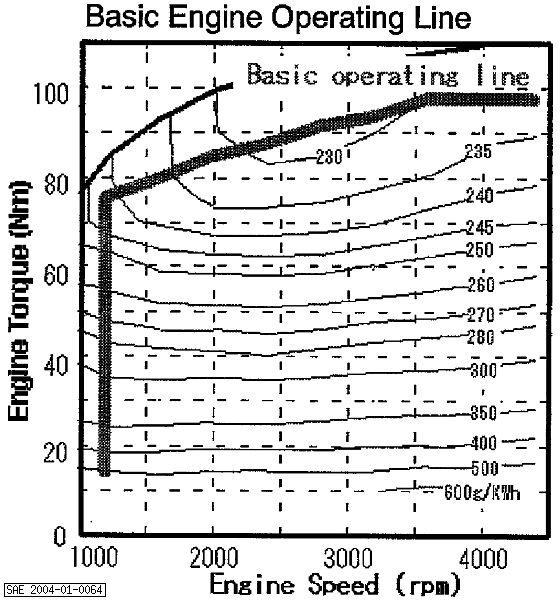本帖最后由 米王的选择 于 2014-7-10 10:21 编辑
TonyXiang 发表于 2014-7-10 09:15 
With all due respect,这点我和你想法不一样。
丰田混动节能的根本原因是用了高效率的Atkinson循环发动 ...
ALH and Common Rail TDI BSFC chart about 41-42%Thermal efficiency for the 1996-2012 MY's give or take.


Prius BSFC chart

So diesel has better efficiency?
Yes and no. In theory, yes. In practice, not by much. Drivbiwire's number of 41 to 42% for ALH and common rail engines is close to the maximum theoretical thermal efficiency for these engines and won't be achieved in practice by anyone except a dedicated hypermiler. 41 to 42% thermal efficiency for a diesel engine equals a continuous (average) BSFC of 208.
The Atkinson cycle engine in the Prius has the advantage of being operated to maximize its thermal efficiency. Looking at the BSFC maps posted by drivbiwire you can see the Prius engine is operated so its BSFC is about 230 g/kWHr. The ALH engine (upper left), while capable of a lower BSFC typically runs at a BSFC of about 250 g/kWHr - i.e. highway cruise at 2,200 rpm.
Crunching these numbers you get:
Prius thermal efficiency - 34.2% (230 BSFC)
ALH thermal efficiency - 34.5% (250 BSFC)
But then......the Prius is handicapped because its Atkinson cycle engine has to charge a battery pack with a charging efficiency of (so I've read) about 78%. And then drive an electric motor with an additional efficiency loss. So the diesel engine pulls ahead. And you can see why Prius owners are often disappointed with their fuel consumption. And why the Prius is mostly a fashion statement.
To get good fuel consumption you need a small engine - gasoline or diesel - operating at high rpm (low BSFC), coupled to a manual transmission in a lightweight vehicle.
这个回答算比较全面了吧??
|
